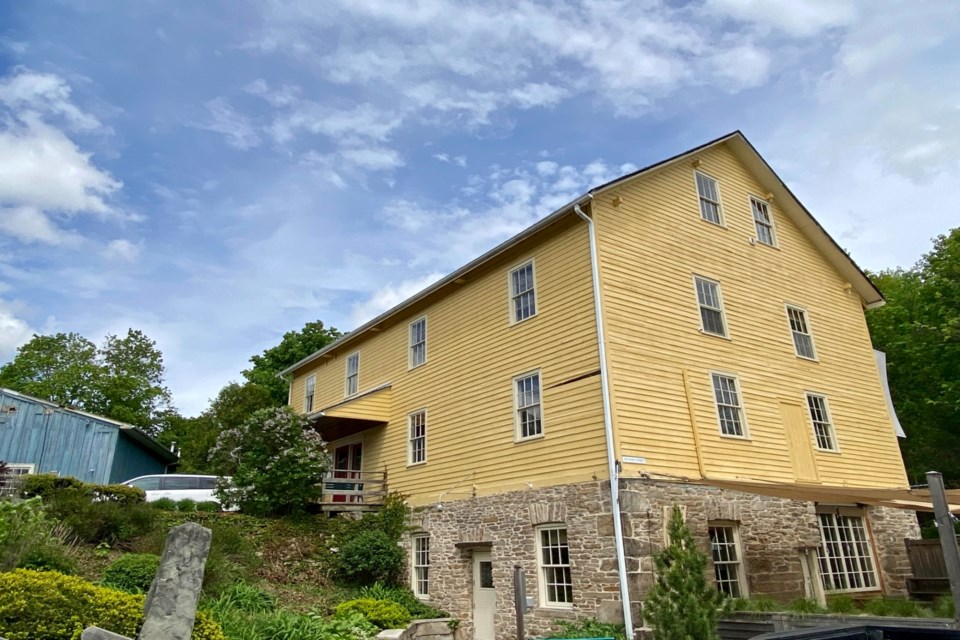Halton Hills is awash with examples of historic buildings that have been preserved and transformed into something new. The Helson Gallery used to be a church. The Acton Town Hall Centre was, as the name suggests, a town hall. The Copper Kettle Pub was a general store.
Next door to the pub in Glen Williams is the famed Williams Mill, which used to be an actual mill that was saved from demolition and turned into an arts space by Doug Brock, the owner of the property.
“The fact that Doug embraced this piece of dying and dilapidated architecture and resurrected it and rebuilt it really sings and resonates with me,” said Pauline Gladstone, one of the resident artists who has her own space in the mill.
What Brock did was employ adaptive reuse - the process of preserving and repurposing a piece of historic infrastructure, most commonly buildings. Adaptive reuse can breathe new life into an old piece of property and often delight the public enough to make it a destination.
“A building is already built, the energy has been put into it. And to simply rip it down, to build something else is sort of a waste,” said Dr. Cory Zurell of the University of Waterloo’s Civil and Environmental Engineering department.
“A lot of times where a building is being readapted for something else, it's because it's a nice old building. Frequently, especially in southwestern Ontario, a lot of these buildings go back to the late 1800s, early 1900s, the brick and beam [is] the vernacular [for them]. And people like those buildings,” Zurell added.
In nearby municipalities, examples of such historic properties include the Peel Art Gallery, Museum and Archives, which used to be a jail and courthouse. The Alton Mill Arts Centre was a mill. Toronto built a skyscraper around their old stock exchange building, adapting the old stone facade to be part of the new tower.
Further afield, the Viaduc Des Arts in Paris, France, was a railway viaduct until 1994. The upper part of the platform is now a park and the vaults underneath contain shops and artist spaces. The High Line in New York’s Manhattan Island also used to be an elevated rail platform. Just like the Viaduc des Arts, it's now a raised linear park.
However, not all buildings get plucked from erasure. Some buildings are altered so much that they can no longer be called a heritage property. In a report submitted to the June 13 council meeting, Town Senior Heritage Planner Laura Loney advised that the historic Gregory Theatre at 72 Mill St. in Georgetown does not meet criteria for designation.
Despite being built in 1958, her evaluation said the subject property “does not retain significant physical and design value or contextual value.”
Loney explained that properties can receive heritage designation “if they have physical or design value, historical or associative value and contextual value. So a property has to meet one of those three criteria in order for a municipality to consider designation for the property.”
In her research and evaluation report about the theatre, she said it “has historical and associative value “ but not enough “design and physical or contextual values.”
Once a property is designated, staff works with owners to balance the vision for the site with standards put out in law.
"Adaptive reuse allows for what’s important about a historic property to be retained while making changes to ensure the property has purpose and usefulness in the future,” noted Loney.



